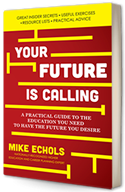Change Career – millions are considering it and there are millions of things to consider. Where to begin?
What is changing is the world around you. At your core you are changing very little. Scientists know that by the time you reach adulthood your brain is wired by your experiences.You are who you are. The first challenge is to match who you are with the new opportunities and make the best choice that fits you. There are lots of career choices, many with very attractive salaries and growth opportunities.The US Department of Labor lists almost a thousand in America alone.
 Source: Bureau of Labor Statistics. Total non-farm payroll employment increased by 195,000 in June (2013) and the unemployment rate was unchanged at 7.6%, the U.S. Bureau of Labor Statistics report. Source: What Color is Your Parachute? In March 2012 4,356,000 people found work and there were 3,737,000 job vacancies waiting to be filled. That is a total of 8,093,000 employment opportunities.
Source: Bureau of Labor Statistics. Total non-farm payroll employment increased by 195,000 in June (2013) and the unemployment rate was unchanged at 7.6%, the U.S. Bureau of Labor Statistics report. Source: What Color is Your Parachute? In March 2012 4,356,000 people found work and there were 3,737,000 job vacancies waiting to be filled. That is a total of 8,093,000 employment opportunities.
So, contrary to what some are saying, the problem is not a lack of employment opportunities. What is confusing is that every month the popular press focuses on the unemployment rate and the net new jobs created in the last month. Recently the new jobs number has been around 180,000 per month. But what is more important to the career change decision, is the fact that every month American companies recruit and hire millions of new employees, not merely a few hundred thousand reported as new jobs.This adds up. Over a year’s time this means that there are actually tens of millions of opportunities to find a job in a new career.
The real challenge for the career changer is to decide the key question: Which of these tens of millions of opportunities do I go after? And even more important – how do I decide? Here are some suggestions to help guide you onto the right path.
Think of a career as what you DO with your life.The key to making the right choice is to make sure that what you do matches who you are as a person. Many go through life trying to figure out what they want to do “when they grow up”. They are looking for purpose and from that personal happiness. Sadly millions never find their answer. The career changer has a unique opportunity to link their doing with their being and from that develop purpose and happiness.
Who you are is fixed. You can learn new skills but in the end none of us get to fundamentally change who we are as an adult. So the first thing the career changer has to do is find out who they are. There are very good scientific instruments to help them do just that. Many are listed in my book “Your Future is Calling.” It is a place to begin.
Once the career changer has an objective read on who they are, they need to look at good information on the doing part of the career choices. Here again, there is good objective information available on the specific career choices available. The very comprehensive web site O*NET provides excellent information on a host of critical career factors including what someone in that career actually does every day. This is the source of information on the doing part of the career choices.
The last pieces of the puzzle are to decide on what to learn and where to learn it for the new career.There are thousands of education programs at community colleges and four year institutions to develop the skills required to qualify for new career opportunities. Once the career that matches who you are is selected, course catalogs, course descriptions and costs are available at college web sites. In addition, the Department of Education maintains a comprehensive site of information about college programs and costs on a site called College Navigator. At this point the main challenge for the career changer is to select the major and the college that is the best buy for the career chosen.
At the beginning, a career change decision feels overwhelming mainly, because it is.There are millions of things to consider. The good news is that the range of choices narrows quickly when the match between who you are and what you do is made at the beginning. There is still a lot of data to look at and evaluate but all of that is relatively straight forward with a good road map. See “Your Future is Calling” for details on how to do this part of the career change decision.
